|
Benefits of the Magical Properties of
Water
A.
Positive Effects of Buoyancy: A Summary

-
Buoyancy decreases the effects of
gravity on movement: An individual who weighs 70 kg
on land will weigh about 7 kg in neck deep water.
Populations who have load bearing difficulty on land
(including obese, frail elderly, arthritic,
disabled, injured, and women in the childbearing
year, athletes who have been overtraining on land,
people with other kinds of painful joint disorders)
will exercise in relative comfort and ease in the
water.
-
Decreased gravity results in
decreased joint loading: When the bones within a
joint are not forced together by gravity, the joint
may have slightly increased range of motion and
movement comfort. CALA vertical water training
exercises using “The Charlene Kopansky Method” are
designed to encourage full range of motion. The
benefits of this include increased joint mobility
and resistance to joint injury.
-
The force of buoyancy assists venous
return: On land, the downward force of gravity
pushes the blood toward the feet. The cardiovascular
system must work against gravity to return blood to
the heart. In the water, the up-thrust of buoyancy
counteracts the downward pull of gravity, assisting
venous return. This will contribute to lower
exercise heart rates during vertical aquatic
training, however this does not imply that the
training effect is lower.
B. Positive Effects of Hydrostatic
Pressure (HP): A Summary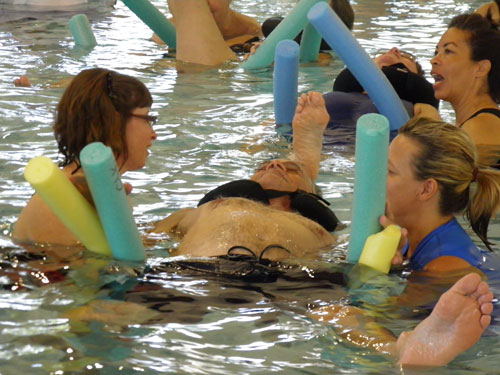
-
Venous return and cardiac function
are greatly enhanced by HP during vertical water
training.
-
HP assists participants to exercise
more vigorously with less strain on the
cardiovascular system and a reduced training heart
rate for a given level of exertion (as compared to
land exercise). This does not imply that the
training effect is lower.
-
HP reduces swelling of injured or
edematous (swollen) joints or limbs below the water.
This effect is enhanced with greater depth of
immersion.
-
The pressure of water on the chest
wall creates a training effect for the respiratory
muscles. This pressure may be excessive for people
with poor respiratory health and /or
compromised respiratory system.
C. Positive Effects of Turbulence:
A Summary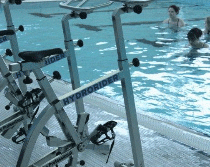
-
Currents and eddies in the water
massage the skin, promoting circulation, relaxation
and increased pain tolerance.
-
Turbulence contributes to the
resistance felt in aquatic exercise (see Coefficient
of Drag, PD equation, Resistance earlier in this
chapter).
-
The core muscles become stronger as
participants learn to stabilize their bodies against
turbulence.
-
Balance is challenged and trained by
turbulence.
-
Exercises can be designed to work
with or against turbulence, thereby increasing or
decreasing intensity.
-
Turbulence enhances venous return
thus lowering the exercise heart rate as compared to
the same exercise intensity on land. This does not
imply a lower training effect.
D. Positive Effects of Thermal
Conductivity: A Summary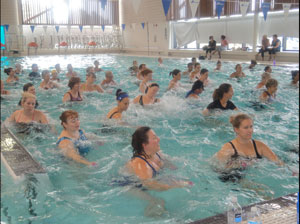
For all of the following points, it is assumed that
vertical water training is being conducted in the
appropriate water temperature.
-
The water “wicks” away excess body
heat during VWT using the “Charlene Kopansky
Method”, creating a cool, comfortable environment
for vigorous exercise.
-
Blood that would be shunted to the
skin for cooling (on land) is available to the
working muscles when exercising in water.
-
The heart does not have to work as
hard as it does on land to assist with
thermoregulation of the working body.
-
Pool temperatures can be altered to
meet the needs of special groups, from
rehabilitation (31° to 37°C / 88° to 98°F), to
intense athletic training (around 27°C).
E. Positive Effects of Water‟s
Resistance: A Summary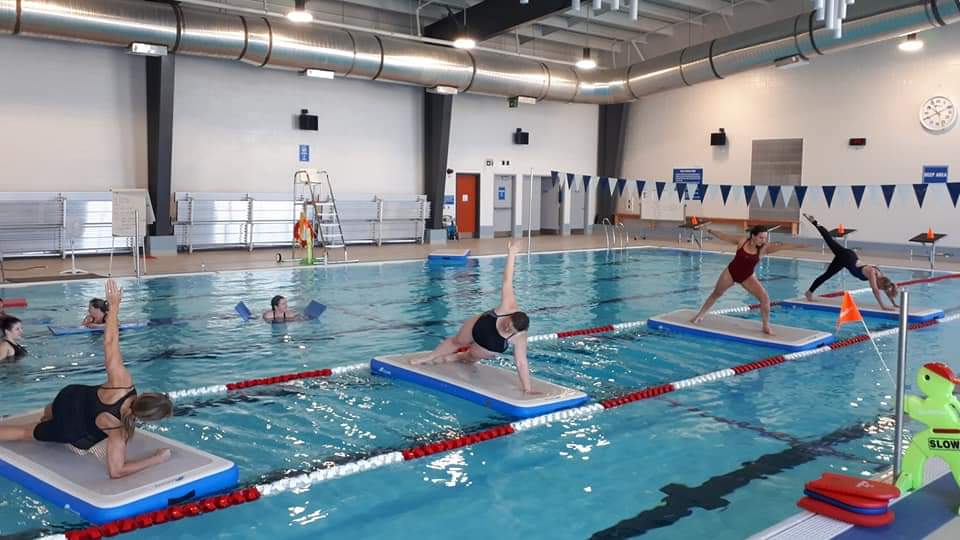
-
Pressure Drag: The force and energy
required to move through water develops muscle and
bone strength as well as cardiovascular and muscular
endurance. Remember that the resistance of water
will only be effective if limbs are kept under the
water when moving.
-
Accommodation: By changing hand /
foot configuration, lever lengths, speed or range of
motion, the work done during vertical water exercise
is readily altered to suit a variety of participant
needs.
-
Multidirectional Resistance:
Resistance to movement in all directions fosters
balanced muscle usage and training. VWT can be
classified in a category of “All Gain, No Pain”,
according to fellow aqua enthusiast, Irene Wallin,
formerly of H2Oz, Australia. Water accommodates all
levels of fitness.
-
Action-Reaction
Forces (Newton.s Third Law): When proper alignment
and movement technique are taught and maintained in
vertical water training, many muscle groups must be
recruited to stabilize the body. These challenges
ultimately develop coordination (an essential
component of fitness) as they increase core strength
and stability.
-
Dampening Effect:
Movements are slower and less likely to be jerky in
water.
In short, you are getting a complete
overall full body workout, without the impact to your
joints, you won’t get hot, you won’t get nearly as
winded, the risk of DOMS ( the muscle soreness the next
day) is greatly reduced, and you are having fun! You
have an effective way to get a complete overall workout
without feeling like you have.
There are so many benefits to exercising
in water that it is worth the ‘first day of
kindergarten’ feeling you may experience because you are
learning how to use your body effectively without the
normal stresses that gravity and exertion normally put
us through.
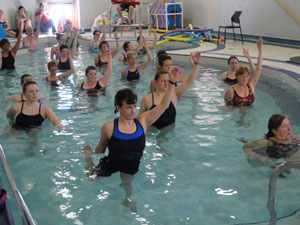 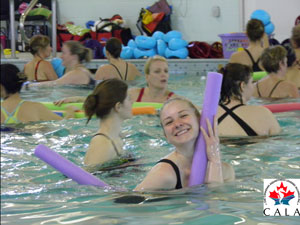 .gif) 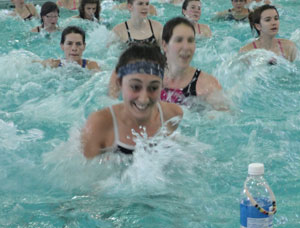 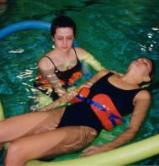 |






.gif)

